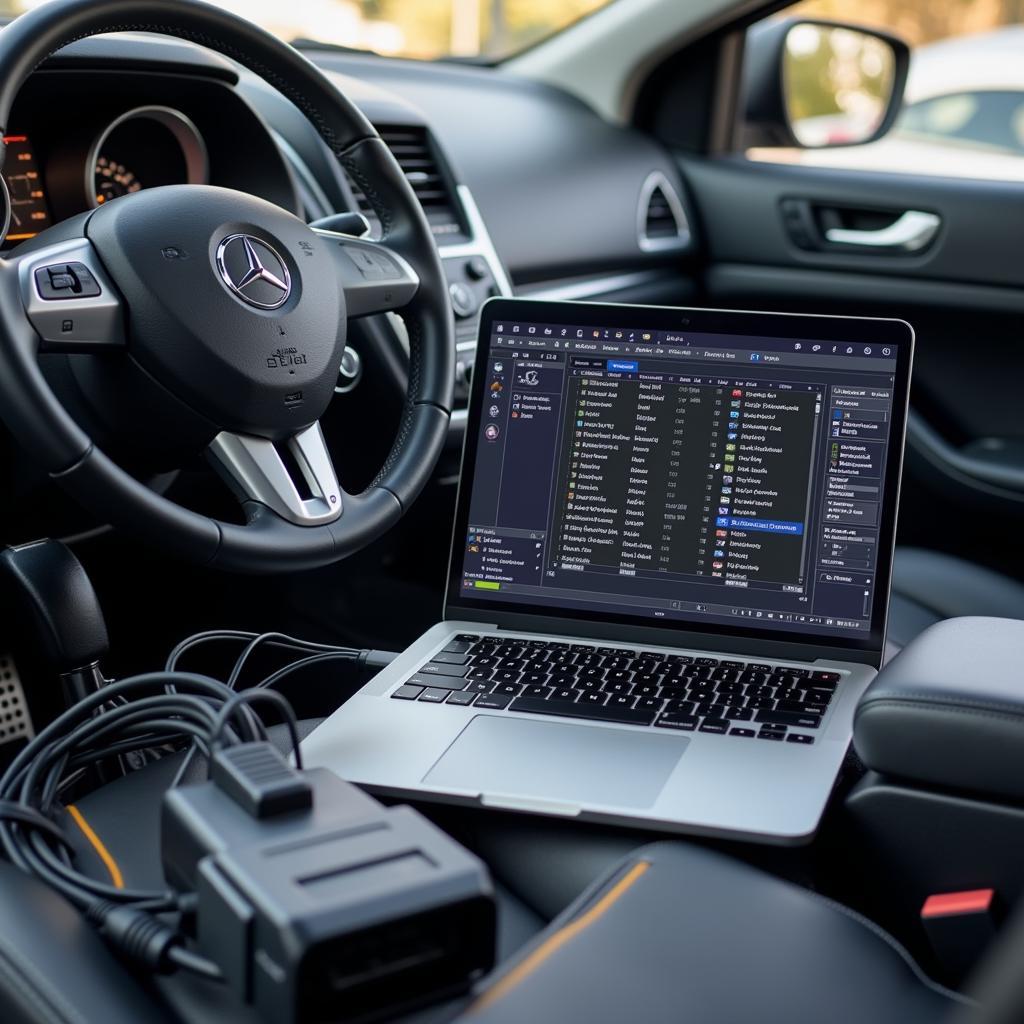The dreaded brake warning light on your Discovery 3 can be a source of anxiety. Understanding what triggers these lights and how to address them is crucial for safe and reliable driving. This guide provides in-depth information on diagnosing and resolving brake warning light issues on your Discovery 3.
The brake system in your Discovery 3 is complex, incorporating several components that work together to ensure safe stopping power. When a fault is detected, the system illuminates a warning light on the dashboard to alert the driver. These lights can range from amber, indicating a less critical issue, to red, signifying a more serious problem requiring immediate attention. Ignoring these warnings can lead to costly repairs and potentially dangerous driving situations. Let’s delve deeper into the common causes and solutions.
Understanding Your Discovery 3 Brake Warning Lights
The Discovery 3 utilizes several different brake warning lights to communicate specific issues. Recognizing which light is illuminated is the first step in diagnosis. The most common lights include the red brake warning light, indicating a critical system failure, and the amber brake warning light, often signaling a less severe problem or the need for maintenance.
Red Brake Warning Light: Immediate Action Required
A red brake warning light is the most serious indication of a brake system problem. This light typically indicates a significant drop in brake fluid level, a critical malfunction in the braking system, or a problem with the parking brake. It requires immediate attention. Continuing to drive with a red brake warning light illuminated can be extremely dangerous.
Amber Brake Warning Light: Investigate and Address
An amber brake warning light, while less urgent than a red light, still requires investigation. This light often relates to issues like worn brake pads, a malfunctioning ABS sensor, or a problem with the Electronic Brake Distribution (EBD) system. While you may still be able to drive cautiously, it’s essential to diagnose and address the underlying cause promptly.
Common Causes of Discovery 3 Brake Warning Lights
Several factors can trigger brake warning lights on your Discovery 3. These can range from simple fixes to more complex issues requiring professional diagnosis and repair.
- Worn Brake Pads: This is one of the most frequent causes of amber brake warning lights. As your brake pads wear down, a sensor triggers the light to alert you to the need for replacement.
- Low Brake Fluid: Low brake fluid can trigger the red brake warning light. This can be caused by a leak in the brake system or simply due to worn brake pads requiring more fluid to operate. A leak should be addressed immediately by a qualified mechanic.
- Faulty ABS Sensor: A malfunctioning ABS sensor can trigger an amber brake warning light and potentially disable the ABS system. This requires diagnostic testing to identify the faulty sensor.
- Parking Brake Issues: If the parking brake is not fully disengaged or there is a fault in the parking brake system, it can illuminate a brake warning light.
- Brake Fluid Leaks: Leaks in the brake lines, calipers, or wheel cylinders can cause a loss of brake fluid and trigger the red brake warning light.
“Regular brake system inspections are crucial for preventing warning light issues,” advises John Smith, a certified automotive technician specializing in Land Rover vehicles. “Addressing minor problems promptly can prevent them from escalating into more significant and costly repairs.”
Troubleshooting Discovery 3 Brake Warning Lights
While some brake warning light issues require professional attention, there are several steps you can take to troubleshoot the problem yourself.
- Check the Parking Brake: Ensure the parking brake is fully disengaged.
- Inspect Brake Fluid Level: Check the brake fluid reservoir and top it off if necessary. If the fluid level is consistently low, suspect a leak and consult a mechanic.
- Check for Visible Leaks: Inspect the brake lines, calipers, and wheel cylinders for any signs of leakage.
- Check Brake Pad Wear: Visually inspect the brake pads through the wheel spokes. If they appear thin or worn, they likely need replacement.
If you are unable to identify the cause or the problem persists, it’s essential to seek professional assistance. Modern vehicles, like the Discovery 3, often require specialized diagnostic equipment to pinpoint the exact issue.
“Ignoring brake warning lights can have serious consequences,” warns Emily Davis, a senior automotive engineer with extensive experience in brake systems. “A seemingly minor issue can quickly escalate into a major safety concern.”
2008 f-150 red brake warning light on
Maintaining Your Discovery 3 Brake System
Regular maintenance is crucial for preventing brake warning lights and ensuring the safety and reliability of your Discovery 3. Here are some essential maintenance tips:
- Regular Brake Inspections: Have your brakes inspected by a qualified mechanic at least every 12,000 miles or as recommended by your vehicle’s service schedule.
- Brake Fluid Flush: Brake fluid should be flushed and replaced every two to three years to maintain its effectiveness.
- Brake Pad Replacement: Replace brake pads as needed, typically every 30,000 to 70,000 miles, depending on driving conditions and habits.
amber brake warning light discovery 3
Conclusion
Understanding your Discovery 3 brake warning lights is crucial for maintaining a safe and reliable vehicle. Addressing warning lights promptly and adhering to a regular maintenance schedule can prevent minor issues from developing into costly repairs and potentially dangerous situations. If you are uncertain about the cause of a brake warning light, consult a qualified mechanic for professional diagnosis and repair. Don’t ignore these vital signals – your safety depends on it!

